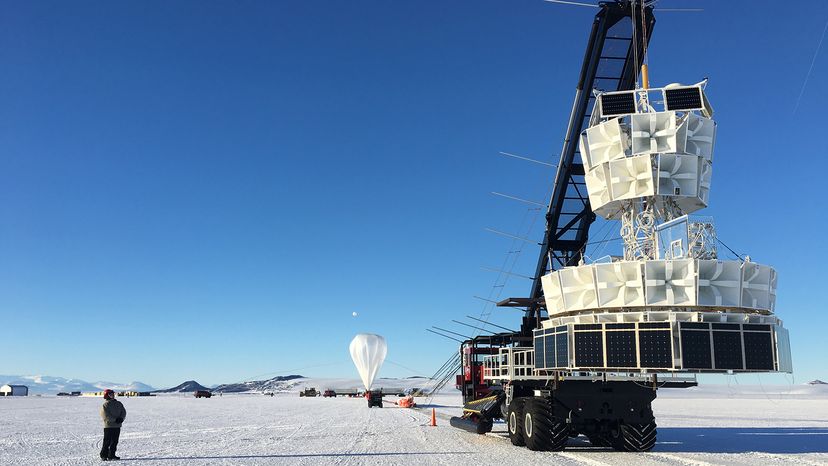
Something strange is happening above the frozen landscape of Antarctica.
When scientists launched a science balloon mission called the Antarctic Impulsive Transient Antenna (ANITA) over the continent in 2006, a cosmic ray pinged off one of its instruments. That isn't so strange. Cosmic rays fly from deep space all the time, and ANITA can detect them and measure their energies. But on this occasion, the cosmic ray didn't come from above, it came from below. This high-energy particle had emerged from the ice and traveled upward through the atmosphere. That's not something that cosmic rays are supposed to do.
Advertisement
During another ANITA flight in 2014, it happened again.
Cosmic rays come from some of the most energetic places in the universe — from supernovas to the swirling maws of black holes. To see a cosmic ray emerge from the earth suggests that this particle traveled from deep space and passed right through the planet before emerging on the other side. According to physics, however, this is impossible.
The thing with cosmic rays, which are high-energy protons and atomic nuclei, is that they have large cross-sections. In other words, they have no problem interacting with matter. Should a cosmic ray hit the Earth, it will be stopped in its tracks by the atmosphere, like a bullet hitting a cinderblock. Conversely, neutrinos have very small cross-sections, meaning these ghostly particles zip through matter as if it weren't even there. Neutrinos are so weakly interacting with matter that trillions of them pass through our bodies unimpeded every second. But the particles that ANITA detected were not neutrinos, they were (what appear to be) cosmic rays, and they passed straight through our planet as if it weren't even there. Frankly, these cosmic rays are not normal.
Now researchers have revisited these ANITA events in a study submitted in September 2018 and found three similar detections of upward-moving cosmic rays in another Antarctica experiment called IceCube, a particle detector that's buried in the ice. They've arrived at an astonishing conclusion: These aren't regular, Standard Model cosmic rays; they could be evidence of exotic physics.
Exotic physics refers to physics that we don't currently understand, and scientists refer to it as "physics beyond the Standard Model." The Standard Model is a recipe book of sorts that tells the universe how subatomic particles (from electrons to photons to quarks) should behave. When the Large Hadron Collider (LHC) discovered the Higgs boson in 2012 — the particle that endows matter with mass — the Standard Model was complete; the theoretical framework that describes all interactions down to subatomic scales had been wrapped up.
There was, however, a problem. In fact, there were several. The Standard Model does not explain what dark matter and dark energy are. It also cannot explain why the majority of the universe is made from matter rather than antimatter. There's also the question of neutrino mass — the Standard Model falls short there, too. There are many mysteries that cannot be explained by the Standard Model recipe book, so physicists are hard at work trying to find evidence for a recipe book that's governing the universe in the shadows.
Maddeningly, the most complex experiments on Earth have yet to find any conclusive evidence of this shadowy realm, though there are clues. And, according to the researchers investigating the ANITA and IceCube anomalies, these cosmic ray detections may have opened a window into physics beyond the Standard Model, providing evidence of particles that look like cosmic rays and yet don't behave like cosmic rays.
"[U]nder conservative extrapolations of the [standard model] interactions, there is no particle that can propagate through the Earth [...] at these energies and exit angles. We explore here whether "beyond the Standard Model" particles are required to explain the ANITA events, if correctly interpreted, and conclude that they are," the researchers write in their study.
"Supersymmetry" (or SUSY) is one hypothetical exotic physics recipe book that may help explain what's going on. This hypothesis suggests that all the particles we know and love have SUSY particles (aka "sparticles"). These sparticles would provide balance to the Standard Model and may explain some of the mysteries that are confounding physicists and cosmologists. Could these phantom cosmic rays actually be a whole different type of particle emerging from supersymmetry?
It's too early to tell, and more data is needed, but it's tantalizing to think that we may have accidentally glimpsed physics beyond the Standard Model at the most extreme location on Earth.
Advertisement
